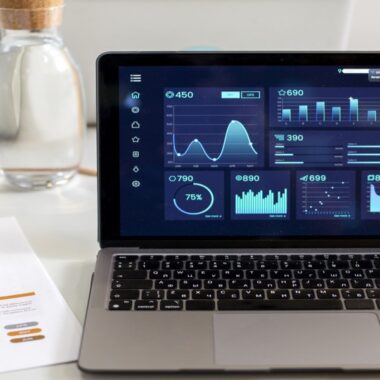Summary: This article explores different types of Data Analysis, including descriptive, exploratory, inferential, predictive, diagnostic, and prescriptive analysis. Understanding these methods helps organisations extract valuable insights, improve decision-making, and drive innovation across various sectors, ultimately enhancing operational efficiency and competitive advantage.
Introduction
Data Analysis transforms raw data into valuable insights that drive informed decisions. It systematically examines data to uncover patterns, trends, and relationships that help organisations solve problems and make strategic choices. The importance of Data Analysis in decision-making cannot be overstated, as it provides a factual basis for actions and minimises guesswork.
This article explores the different types of Data Analysis, highlighting their methods and real-world applications. By understanding these types, businesses and researchers can choose the right approach to analyse data effectively and gain a competitive edge.
What is Data Analysis?
Data Analysis examines, cleans, transforms, and models data to extract meaningful information. It uses statistical and logical techniques to interpret raw data and uncover trends, patterns, and insights. By converting vast amounts of unstructured data into actionable insights, Data Analysis helps organisations and researchers make informed decisions.
Role in Extracting Insights from Raw Data
Raw data is often complex and unorganised, making it difficult to derive useful information. Data Analysis plays a crucial role in filtering and structuring this data. By applying techniques like Data Mining, Statistical Analysis, and Visualisation, Analysts can identify key patterns, correlations, and anomalies within datasets.
This extraction of insights enables companies to understand customer behaviour, optimise operations, and predict future outcomes.
Key Benefits of Data Analysis in Business and Research
Data Analysis provides several critical benefits. In business, it enhances decision-making by offering accurate insights into market trends, customer preferences, and financial performance. It also supports operational efficiency by identifying bottlenecks and opportunities for improvement.
In research, Data Analysis enables scientists to validate hypotheses, discover new knowledge, and improve the reliability of their findings. Ultimately, it drives innovation, competitiveness, and success in business and academia.
Different Types of Data Analysis
Data Analysis comes in various forms, each serving a unique purpose depending on the objectives and Data Analysis type. Different approaches help organisations make sense of raw data, from simply summarising past events to predicting future outcomes.
This section will explore six common types of Data Analysis: Descriptive, Exploratory, Inferential, Predictive, Diagnostic, and Prescriptive. Understanding each type is crucial to selecting the most effective method for your data needs.
Descriptive Data Analysis
Descriptive Data Analysis summarises historical data to provide insights into what happened. It helps businesses and organisations understand trends and patterns in past data, allowing them to gauge overall performance or identify key characteristics. The goal is not to draw inferences or predict future outcomes but to provide a clear data snapshot.
Techniques
- Mean: The average value of a dataset, providing a central tendency.
- Median: The middle value in a dataset, helping to understand the data’s distribution.
- Mode: The most frequent value, useful in categorical data.
- Standard Deviation: A measure of the dispersion or variability in the dataset.
Applications
Descriptive Data Analysis is widely used in business reporting and dashboards. Companies use it to assess performance metrics like sales figures, website traffic, and customer demographics. Dashboards, which visualise key performance indicators (KPIs), rely heavily on descriptive statistics to summarise large datasets into digestible information.
Exploratory Data Analysis (EDA)
Exploratory Data Analysis (EDA) is an approach to analyse datasets to uncover patterns, anomalies, or relationships. The primary purpose of EDA is to explore the data without any preconceived notions or hypotheses. By doing so, Data Scientists can better understand the structure of the data, identify trends, and generate new hypotheses for further study.
Techniques:
- Data Visualisation: Graphs, charts, and plots to help visualise trends and outliers.
- Clustering: Grouping similar data points to identify segments within the data.
- Correlation Analysis: Examining relationships between different variables.
Applications
EDA is widely employed in research and data discovery across industries. Researchers use EDA to better understand their data before conducting more formal statistical analyses. It is also instrumental in identifying outliers or missing values that may distort the results of more advanced Data Analysis techniques.
Inferential Data Analysis
Inferential Data Analysis goes beyond the data to make predictions or generalisations about a larger population. By analysing a sample, statisticians can draw inferences about broader trends. This approach is practical when it’s impractical or impossible to analyse an entire population, such as when conducting surveys or experiments.
Techniques
- Hypothesis Testing: Determining whether enough evidence supports a specific claim or hypothesis.
- Confidence Intervals: Estimating the range in which a population parameter will likely fall.
- Regression Analysis: Modelling relationships between dependent and independent variables.
Applications:
Inferential analysis is commonly used in surveys and scientific research. For instance, a survey of a small sample of voters can help predict election outcomes for an entire region. Similarly, in medical research, inferential techniques help generalise results from a study group to a broader population.
Predictive Data Analysis
Predictive Data Analysis uses historical data to forecast future trends and behaviours. The goal is to make informed predictions about what will happen in the future based on patterns observed in past data. Predictive analytics is vital for organisations that want to stay ahead of trends and prepare for potential challenges or opportunities.
Techniques
- Regression: Predicting future outcomes based on relationships in past data.
- Time Series Forecasting: Analysing time-ordered data to make forward-looking predictions.
- Machine Learning: Utilising algorithms that improve predictions through learning from data.
Applications
This type of analysis is widely used in sales forecasting and risk management. For example, businesses can use predictive analysis to anticipate customer demand during certain seasons, helping them optimise inventory and staffing. Financial institutions rely on predictive models to assess the risk of loan defaults or investment returns.
Diagnostic Data Analysis
Diagnostic Data Analysis is designed to uncover the reasons behind past outcomes or events. By identifying cause-and-effect relationships, organisations can determine why a particular problem occurred. This type of analysis is crucial when performance dips or a business encounters unexpected results.
Techniques
- Drill-down: Breaking down data to find the underlying causes of a trend.
- Data Discovery: Investigating data through in-depth examination to pinpoint problems.
- Correlations: Studying relationships between variables to determine causality.
Applications:
Diagnostic analysis is often used in troubleshooting and customer behaviour analysis. For instance, if a company experiences a sudden drop in sales, diagnostic analysis can help determine if the cause is related to pricing, competition, or customer preferences. It’s also useful for identifying root causes in operational failures or performance issues.
Prescriptive Data Analysis
Prescriptive Data Analysis takes Data Analysis one step further by predicting future outcomes and recommending specific actions to achieve desired results. This approach combines data insights with decision-making models to guide organisations on the best action. It is highly strategic and forward-looking, focusing on optimising business decisions.
Techniques:
- Optimisation Algorithms: Identifying the most efficient way to achieve objectives.
- Simulation: Testing different scenarios to find the best solution.
- Decision Analysis: Evaluating various options and their potential outcomes.
Applications
Prescriptive analysis is commonly used in supply chain optimisation and strategic planning. Companies can use it to decide the best distribution routes or create personalised marketing campaigns optimising customer engagement. It’s also invaluable for long-term strategic planning, where organisations aim to align resources and strategies with future goals.
Importance of Selecting the Right Analysis Method
Choosing the appropriate Data Analysis method is crucial for deriving accurate insights and making informed decisions. The effectiveness of the analysis hinges on this selection, impacting the quality and relevance of the results. Here are key reasons why selecting the right analysis method matters:
- Accuracy of Insights: The proper method ensures precise interpretation of data, minimising errors.
- Objective Alignment: Different methods serve varied objectives; aligning the method with the analysis goal enhances clarity and relevance.
- Resource Optimisation: Effective methods can streamline the analysis process, saving time and resources.
- Enhanced Decision-Making: Reliable insights lead to better strategic decisions, improving business outcomes.
- Adaptability to Data Type: Certain methods work better with specific data types, ensuring suitability and effectiveness in the analysis process.
By prioritising the right analysis method, organisations can unlock the full potential of their data, driving growth and innovation.
Methods Used in Data Analysis
Data Analysis involves many methods and techniques to extract meaningful insights from raw data. The proper method depends on the data type and the analysis’s objective. Below are some common methods used in Data Analysis, along with the tools and software that make the process efficient and effective.
Overview of Common Methods
Several methods serve different purposes in Data Analysis, enabling analysts to uncover insights and patterns. Understanding these methods is crucial for making informed decisions and deriving actionable outcomes.
Statistical Analysis
Statistical analysis is fundamental in Data Analysis as it helps summarise and describe data sets. Techniques like mean, median, standard deviation, and hypothesis testing are crucial for identifying patterns and trends in data. Basic statistics lay the foundation for more complex analyses and help businesses and researchers understand data distributions and relationships.
Data Mining
Data mining involves discovering hidden patterns within large datasets. By employing algorithms and techniques such as clustering and association, data mining helps identify correlations, trends, and anomalies that are otherwise hard to detect. This method is beneficial in areas like market research and fraud detection.
Machine Learning
Machine learning automates the creation of predictive models by learning from historical data. This enables organisations to predict future outcomes and improve decision-making processes. Techniques such as regression, classification, and neural networks play a crucial role in these predictions.
Tools and Software Used
Various tools and software facilitate Data Analysis, each offering unique features tailored to specific analytical tasks. Selecting the right tool can significantly enhance efficiency and effectiveness in Data Analysis.
- Excel: Best for basic statistical analysis and quick data manipulation.
- Python: Offers libraries like Pandas and NumPy for Advanced Data Analysis.
- R: A powerful tool for statistical computing and graphical representation.
- Tableau: Ideal for visualising complex data and generating actionable insights quickly.
Applications of Data Analysis
Data Analysis is crucial in various sectors, transforming raw data into actionable insights. Organisations leverage Data Analysis to enhance decision-making, improve operational efficiency, and gain competitive advantages. Here are some key applications:
- Healthcare: Data Analysis aids in patient care by identifying trends in treatment effectiveness, predicting disease outbreaks, and optimising resource allocation.
- Finance: Financial institutions use Data Analysis to assess risk, detect fraud, and manage portfolios, ensuring informed investment decisions.
- Marketing: Businesses analyse customer behaviour and preferences to tailor marketing strategies, enhancing customer engagement and retention.
- Manufacturing: Data Analysis improves production processes by predicting equipment failures, managing supply chains, and optimising inventory levels.
- Retail: Retailers analyse sales data to understand market trends, forecast demand, and personalised shopping experiences.
By harnessing Data Analysis, organisations can make smarter decisions and drive innovation across their operations.
Challenges in Data Analysis
Data Analysis is crucial in decision-making, but several challenges can hinder its effectiveness. Understanding these challenges is essential for achieving accurate insights and making informed decisions.
- Data Quality: Poor quality data, including inaccuracies, missing values, and inconsistencies, can lead to misleading conclusions.
- Volume of Data: The sheer amount of data generated today can overwhelm analysts, making it difficult to process and analyse effectively.
- Complexity of Data: Diverse data types and structures, such as unstructured data, require sophisticated methods and tools for analysis.
- Data Privacy and Security: Protecting sensitive information is crucial, and compliance with regulations like GDPR poses challenges.
- Skill Gaps: A lack of skilled personnel who understand advanced analytical techniques can limit the effectiveness of Data Analysis efforts.
Addressing these challenges is vital to harnessing the full potential of Data Analysis in any organisation.
Bottom Line
In conclusion, understanding the different types of Data Analysis empowers organisations and researchers to make informed decisions and derive actionable insights from raw data. Each analysis type—descriptive, exploratory, inferential, predictive, diagnostic, and prescriptive—serves unique purposes and applications across various sectors.
Businesses can enhance their decision-making processes, optimise operations, and drive innovation by choosing the appropriate method. As data grows in volume and complexity, mastering these analysis techniques becomes essential for staying competitive in today’s data-driven landscape.
Frequently Asked Questions
What are the Different Types of Data Analysis?
The different types of Data Analysis include Descriptive, Exploratory, Inferential, Predictive, Diagnostic, and Prescriptive Analysis. Each type serves a unique purpose, helping organisations extract valuable insights from data to enhance decision-making and operational efficiency.
How Does Data Analysis Benefit Businesses?
Data Analysis benefits businesses by providing accurate insights into market trends, customer preferences, and operational efficiency. It enhances decision-making, identifies opportunities for improvement, and drives innovation, ultimately leading to better business outcomes and competitive advantages.
Why is Selecting the Right Data Analysis Method Important?
Selecting the right Data Analysis method is crucial for accurate insights, resource optimisation, and alignment of analysis goals. The appropriate method ensures precise data interpretation, improves decision-making, and maximises the effectiveness of the analysis process.




